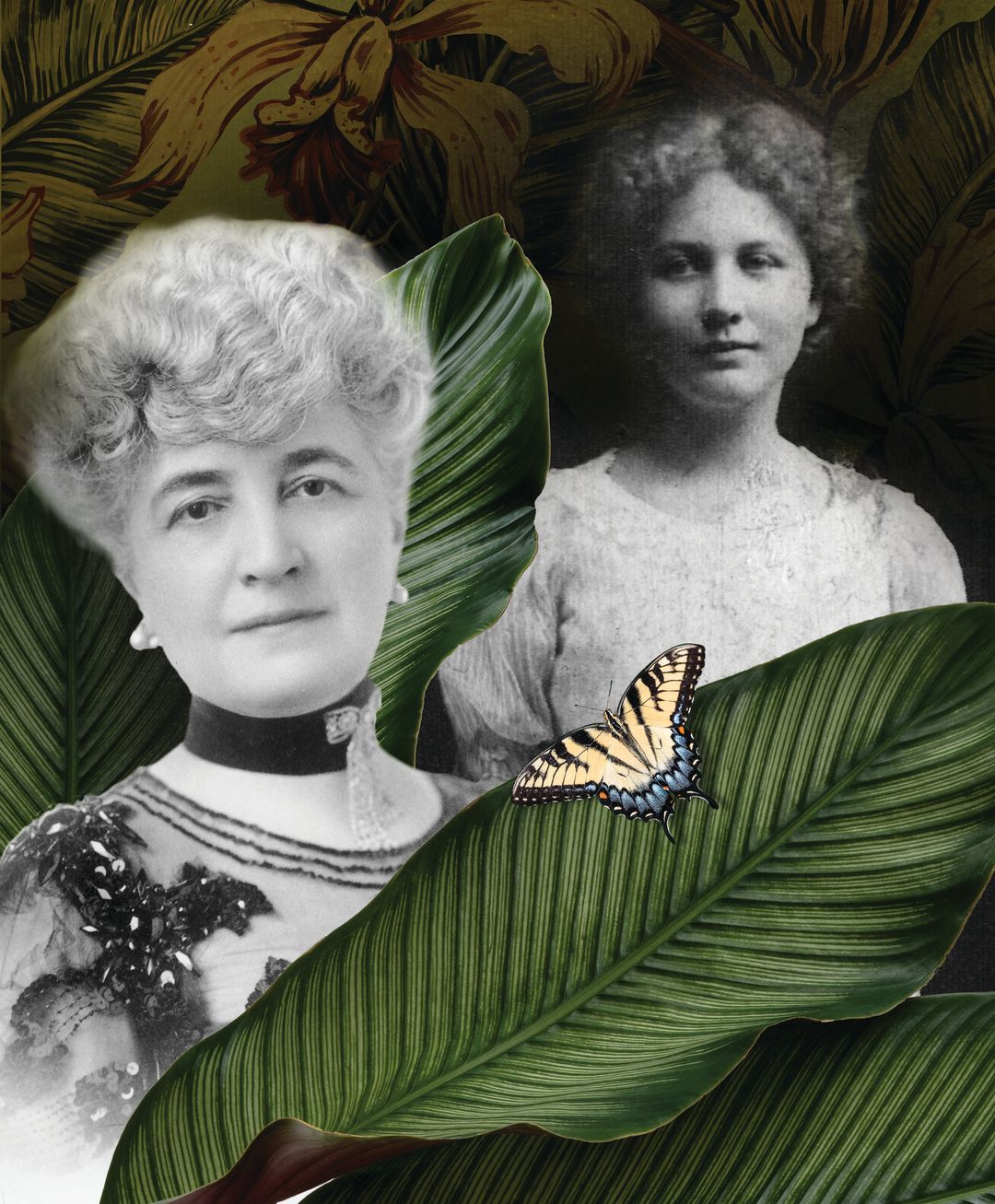The Merger of Historic Spanish Point With Selby Gardens May Foretell a Trend

Bertha Palmer and a young Marie Selby
Image: Courtesy Photos/Gigi Ortwein
It was an “aha” moment that made sense as soon as it was suggested.
What if Marie Selby Botanical Gardens—thriving after five years of leadership under an executive director who’d brought to it popular new models of programming—came to the rescue of Historic Spanish Point, the 30-acre bayfront living museum that was perennially struggling to cover its modest $900,000 annual operating budget, pay its seven full-time and eight part-time staffers, and tackle long-deferred maintenance?
So much sense that it took just a little over two months to complete the momentous merger, from when the idea was floated by Gulf Coast Community Foundation Invest in Incredible consultants, to May 1, when the “adoption,” as Selby Gardens CEO Jennifer Rominiecki calls it, formally took place.
When she was approached in February by HSP leaders, “I thought, huh, interesting,” says Rominiecki. “The more I thought about it, the more I realized the natural alignment between the two organizations on so many levels.”
Especially compelling are Historic Spanish Point’s spectacular natural setting on Little Sarasota Bay and its history, as with Selby Gardens and its benefactor Marie Selby, involving another important local female pioneer, Bertha Palmer. The Chicago socialite and Sarasota landholder had made HSP her winter estate in 1910, and her pergola, sunken garden, fern walk and Duchene Lawn still stand.
Rominiecki says she and the Selby board see the merger as a way to expand the Gardens’ footprint with a significant focus on native Florida plants and nature, “a perfect complement” to its downtown campus’ longtime focus on orchids and bromeliads. “We think [Historic Spanish Point] can be the go-to location in the state of Florida to showcase and interpret native flora,” she says.
To that end, the merger has produced a new joint mission statement: to provide bayfront sanctuaries connecting people with air plants of the world, native nature, and our regional history.
Now, as Selby Gardens’ “companion campus,” Historic Spanish Point’s education programs and marketing will come under Selby’s wings. Short-range goals call for the establishment of a permanent butterfly house there to augment the existing butterfly garden. Longer-term plans call for a boat that will shuttle visitors between the two campuses.
Its 750 member households are automatically members of Selby Gardens, and Selby’s 14,000-plus member households can visit Historic Spanish Point for free. In June, after both campuses reopened following Covid-related closures, Historic Spanish Point saw a 50 percent uptick in visitors from June 2019, “primarily due to Selby Gardens members discovering HSP for the first time,” says Rominiecki.
We may be seeing more such mergers, given the dire financial situation many nonprofits are finding themselves in. (One added factor: Selby and Historic Spanish Point are currently fighting an effort by the county’s property appraiser’s office that would affect their tax-exempt status as nonprofits due to the use of portions of their properties for retail and food sales.) The Chronicle of Philanthropy reported this summer that more than half of all fund raisers nationally expect to raise less money in 2020 and 2021 than they did in 2019. And at least two mid-size local performing arts organizations, neither of which wanted to be named, have been in conversation about merging.
Rominiecki, who got national attention for the move last summer in an article in Forbes, says she’s already gotten calls from two other botanical gardens around the country that are exploring similar options. “In the nonprofit sector,” she says, “it’s a new way of viability going forward, with economies of scale that make the institution more sustainable.”



